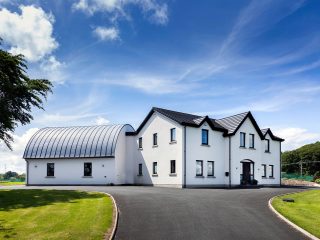As an engineer and one of the first to be on the building energy rating assessors’ database, Rodger O’Connor was on a mission to install renewables in his Co Cork new build. The questions was, which ones.
How did you go about doing the energy calculations?
My wife Louise and I wanted a spacious modern house which was a challenge from an energy point of view but we still managed to design it with the usual bells and whistles to make it nearly zero energy: we have a fairly compact footprint, the house is angled so as to make the most of the sun’s free heat, and it is well insulated and airtight.
I mostly relied on the Passive House Planning Package (PHPP) and referenced the Dwellings Energy Assessment Procedure (DEAP) which is the software you have to use to prove compliance to the ROI building regulations. PHPP delves into much more detail than DEAP so it’s more useful as a modelling tool.
I had data from our previous home, two years’ worth, thanks to a device I had on the electricity meter that recorded our usage. The challenge of course was to adapt this data from an older property with an oilfired boiler to our new notional home. Our energy use is also increasing as the children grow so I did my best to match the kind of demand we would have with the kinds of renewables we might install to meet it.
I also considered reducing energy use at source and even pondered not having a dryer (I lost that battle as we have two small girls) and having the machines set to night time mode. Despite efforts such as these, I knew that realistically we would be mostly needing power in the evenings.
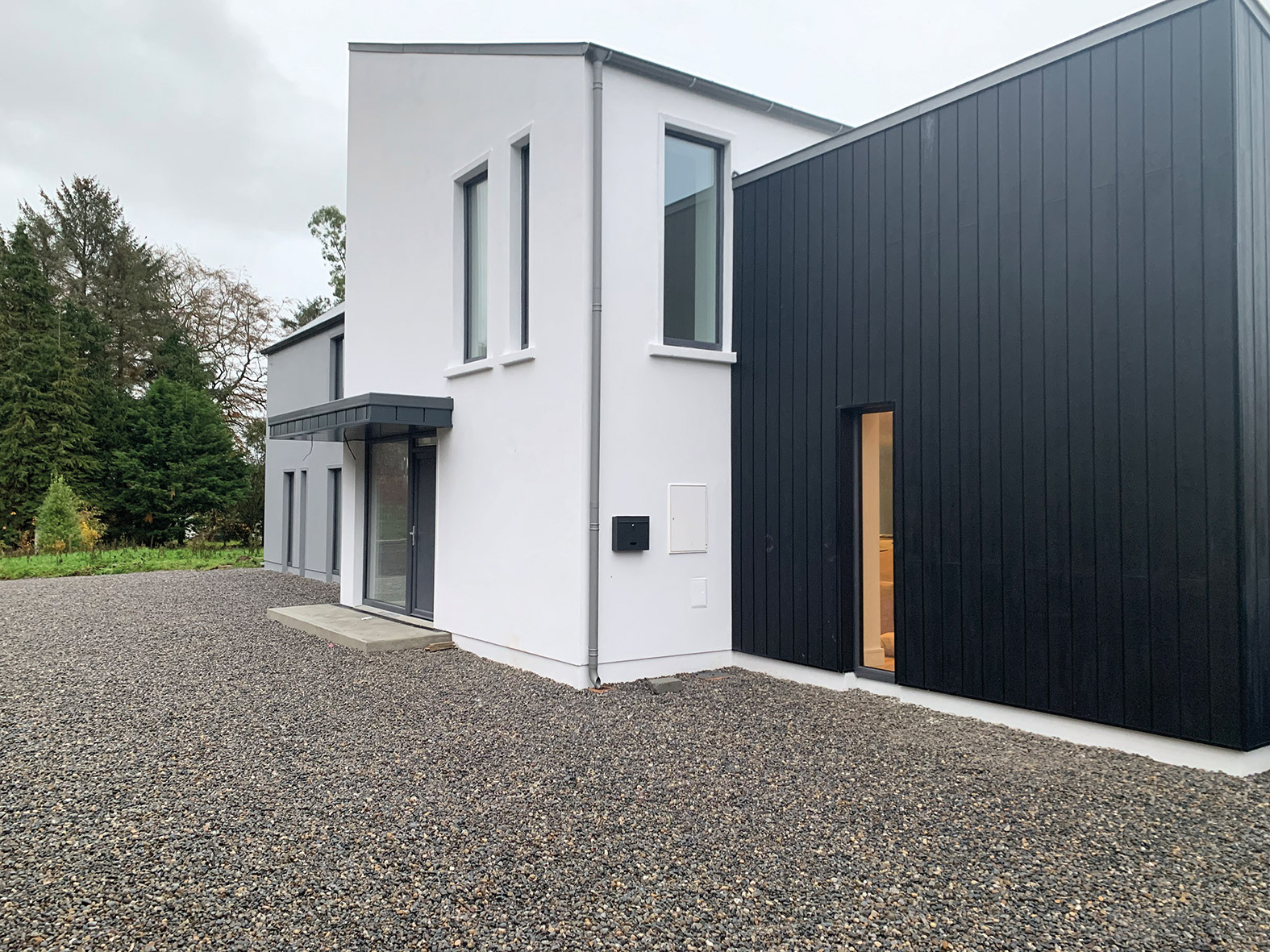
How did you choose between systems?
My initial dream was to live completely off grid, without having to draw on any external energy source to run the house. That turned out to be beyond the scope of our budget but it is still a long-term aim.
The way I saw it, I had three options. Hydro, which harnesses the energy from a running water source such as a stream, wind or photovoltaics (PV). Ideally I’d have all three, wind is great in the winter, PV best in summer (although the hotter the panels get, the worse they perform) and hydro provides a nice constant steady base load.
They each have difference profiles; day versus night and summer versus winter. Wind is good in winter but not so much in summer for example so the challenge of how to store excess electricity when you don’t need it was always going to rear its head.
The cost of installing all three systems would have been prohibitive so I had to balance cost and practicality.
I gave priority to the system that had to be installed at the time of building, and that was PV. I had worked on projects in the past where solar thermal panels were installed and in my experience, some contractors doing it retroactively blindly screw the fixings down. Quality control is much easier with a new build in that regard.
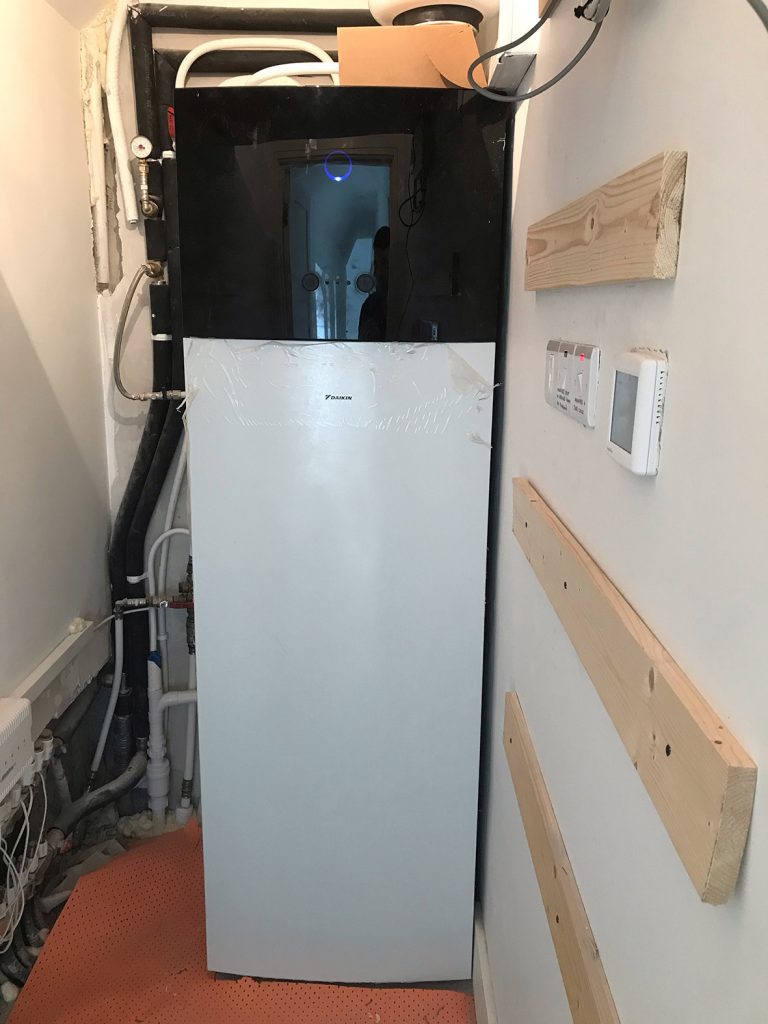
I set up the system so that the house will be able to take in power from hydro and wind in the future, and all that was required was an electricity connection in the shed. We also have it set up so we can add a battery when funds allow. I think it’s a good idea to envision what your dream system is as a whole, and then add to it as you can afford to.
So that was the electricity side of our energy requirements, but I also had to think about generating hot water and to a lesser extent, heat. The house is designed so that we only really need the heat turned on in the depths of winter, for about two to three months of the year.
On average if you look at the calculations, through solar gain the house produces as much energy as we need to run it. The problem is that the analysis shows overheating in the summer and an energy deficit in the winter.
Because I also needed hot water we chose a heat pump, although we did consider a wood pellet or wood burning stove, with electric radiators in the bathrooms and hallway. The practical implications of stoking the stove or keeping pellets humidity-free did put us off as well. It also means more detailing to keep the airtightness intact.
The heat pump therefore supplies hot water and heating year-round with any excess from the PV panels diverted into the hot water tank – thermal energy storage as opposed to a battery (chemical storage).
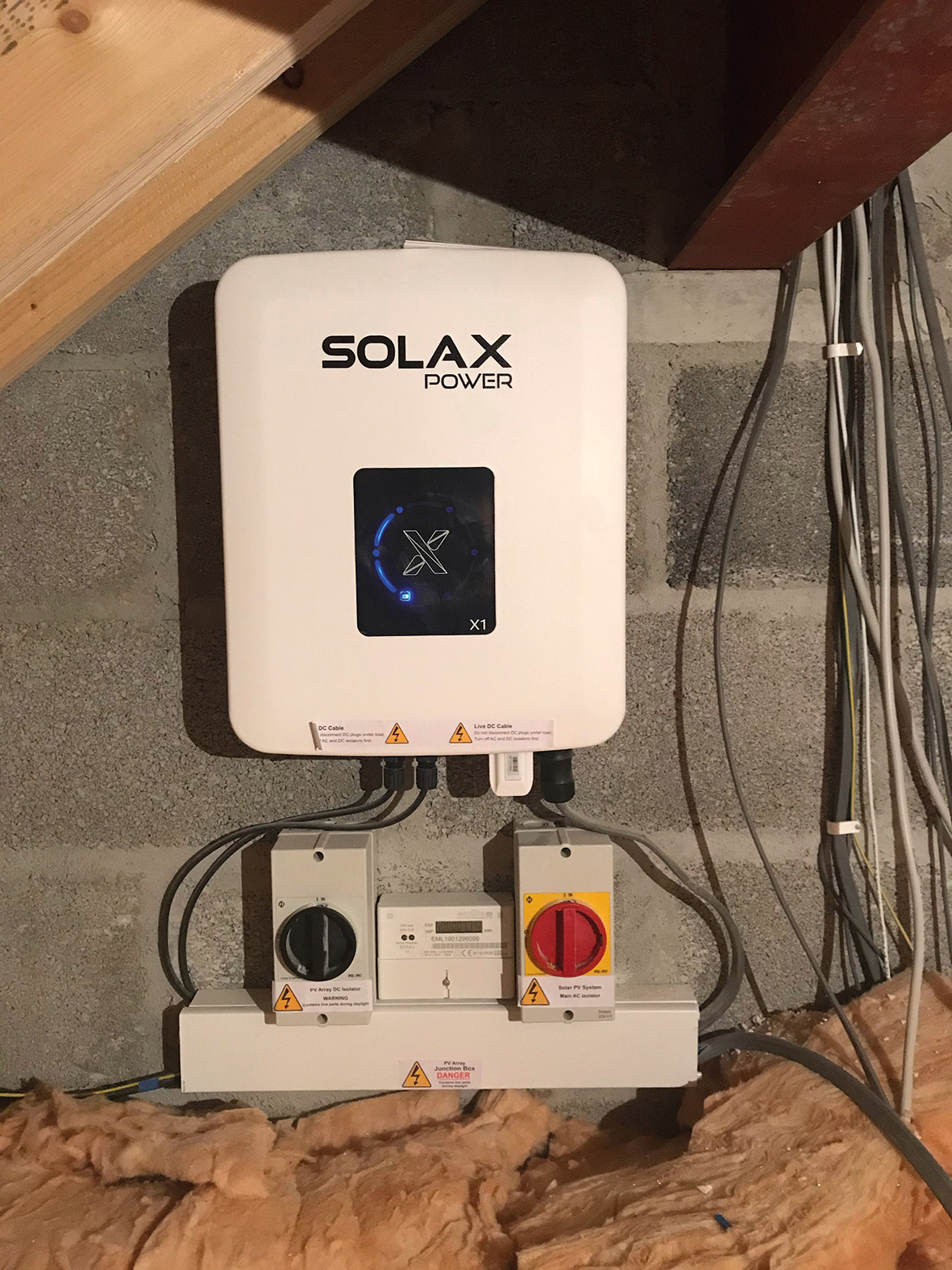
How did the cost comparisons stack up?
Compared to oil or gas, a heat pump is more expensive in a new build, even if you give it a life expectancy of 15 years. The capital cost is quite high and because the house is low energy, the boiler can run the house more cheaply over that period of time.
To be honest I think 10 years is a more realistic figure for the lifetime of an air to water heat pump in Ireland because all or part of the unit is outside, open to the elements. Regardless of where you are in Ireland, it’s a coastal climate and that takes a toll on the materials. That’s why I chose a split system whereby part of the unit is indoors.
I did look into Bio LPG boilers (off-grid gas) but at the time it was only available for commercial applications; oil was a no-no from my point of view, not just on environmental grounds but also due to the risk of spillage.
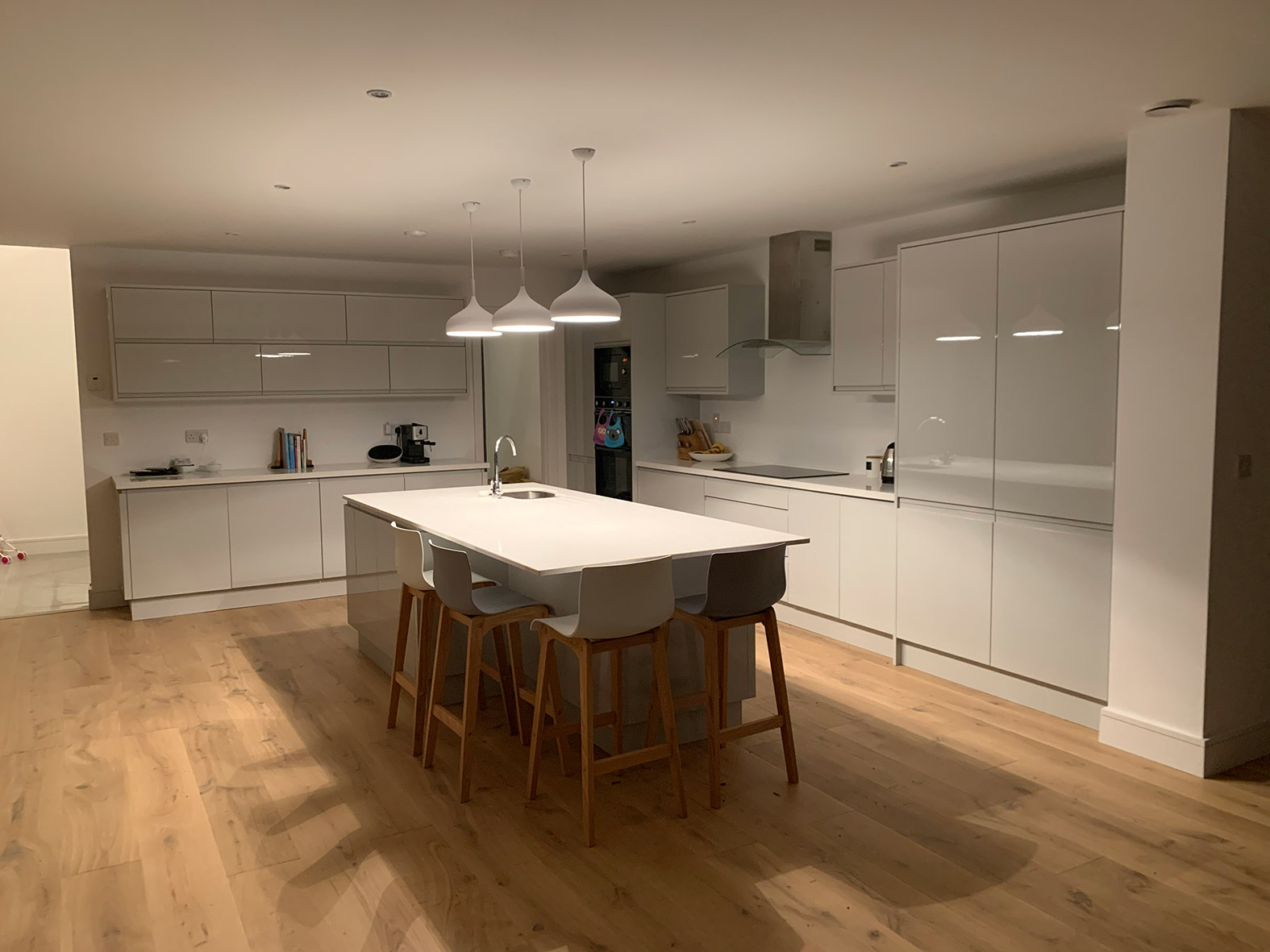
Do the PV panels supply enough energy to power the heat pump?
I think they will but we haven’t completed that energy analysis yet, which will include information about how well the heat dump or thermal energy storage actually works.
I was adamant I wasn’t going to allow my excess electricity to spill onto the grid for free, and to make sure that wouldn’t happen you need a device that communicates when to divert the energy to the hot water tank. We now have the heat pump linked to the PV panels with an interface so they can talk to one another.
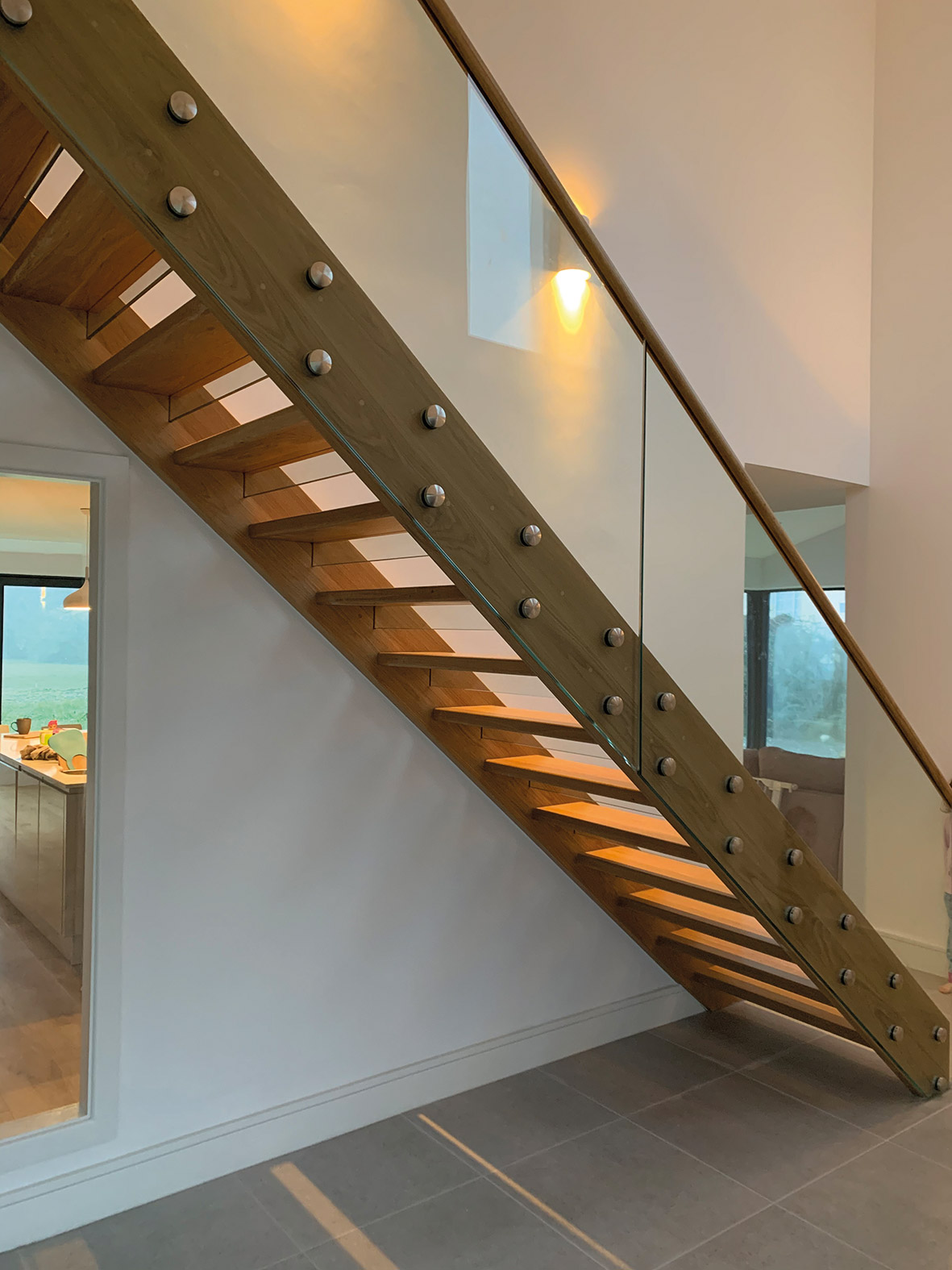
What issues cropped up with suppliers for the Co Cork new build with PV panels?
That interface, which tells the PV panels when to divert excess energy to the hot water tank, was part of the original specification but when it came to installing the system, our supplier said they couldn’t. We managed to get it done in the end, simply because I insisted and installed it a few months after moving in.
This is why it can be helpful to buy into an ecosystem; if you pick from a brand try to stick to their interfaces and products.
Generally speaking, the suppliers I contacted were very reticent to share any data. I found it impossible to find out how much electricity their PV panels actually produced. It’s all well and good to have a figure of two, three or four kilowatts peak, what that measures is the nominal power as measured in a lab.
Actual statistics of how much power you can expect a panel to produce was actually really hard to find. The only data source I managed to come across was an 18MW array that Butler’s Chocolates installed at their factory; I used that information and, based on what I expected we would be using as a family, specified a 3kW array.
During the month of March, the panels were hopping. One day we made five times more energy in a day than I had assumed in my original calculations. I’m delighted!
Listen to a the owner in conversation with our editor, Astrid Madsen, here – https://selfbuild.ie/renewables-sustainability/podcast-ep-41-passive-house-design-with-pv-panels/









